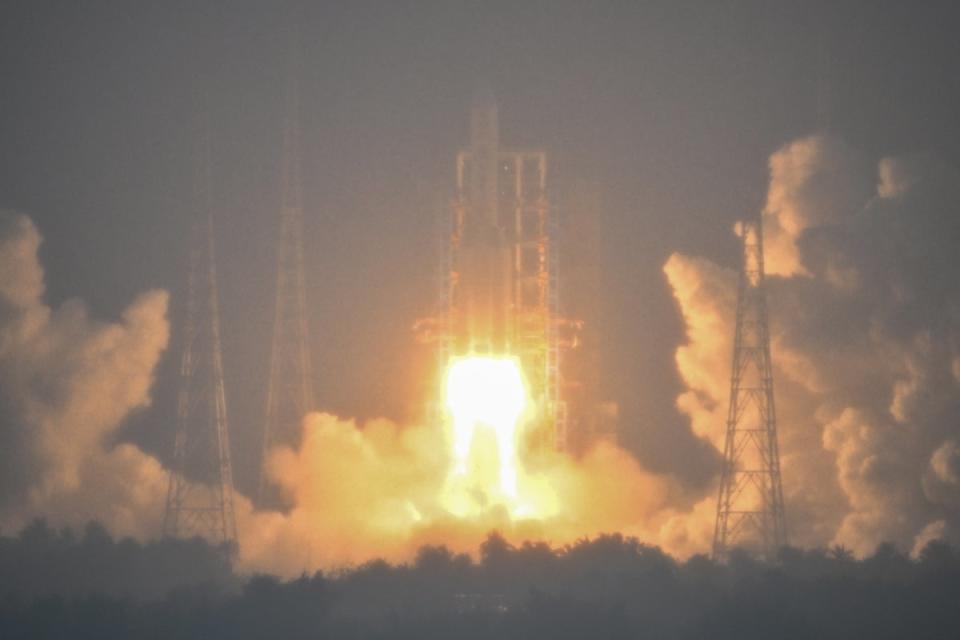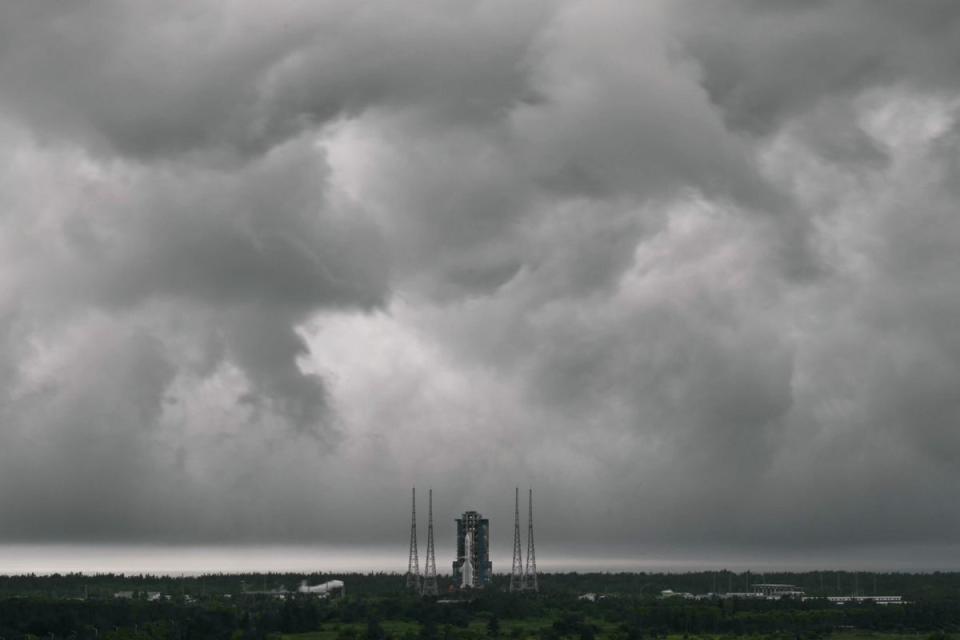Chinese probe Chang’e-6 successfully lands on far side of moon
China successfully landed an uncrewed spacecraft on the far side of the moon on Sunday, in a significant step for the country’s ambitious mission to put astronauts on the lunar surface.
The Chang’e-6 probe made a soft landing on the surface of the moon at around 6.23am local time in China, elevating China’s status among a number of space powers hoping to exploit lunar minerals to sustain long-term astronaut missions and moon bases within the next decade.
The moon programme is part of a growing rivalry with the US – still the leader in space exploration – and other emerging powers including Japan and India.
The mission, described as China’s most complex robotic lunar endeavour, landed in a huge crater known as the South Pole-Aitken Basin, the China National Space Administration said.
It is China’s fourth successful lunar landing from four attempts, and the second on the far side of the moon. China remains the only country to have landed a probe there, having previously done so in 2019 with its Chang’e-4 probe.
The side of the moon perpetually facing away from the Earth is dotted with deep and dark craters, making communications and robotic landing operations more challenging.
Given these challenges, lunar and space experts involved in the Chang’e-6 mission described the landing phase as a moment where the chance of failure was at its highest.
“Landing on the far side of the moon is very difficult because you don’t have line-of-sight communications, you’re relying on a lot of links in the chain to control what is going on, or you have to automate what is going on,” said Neil Melville-Kenney, a technical officer at the European Space Agency working with China on one of the Chang’e-6 payloads.

“Automation is very difficult especially at high latitudes because you have long shadows which can be very confusing for landers,” Mr Melville added.
The Chang’e-6 probe launched on 3 May on China’s Long March-5 rocket from the Wenchang Satellite Launch Centre on the southern island of Hainan, reaching the lunar vicinity roughly a week later before tightening its orbit in preparation for a landing.
The Chang’e-6 lander will now use a drill and a mechanical arm to collect 2kg of lunar material over two days and bring it back to Earth.
The samples will be transferred to a rocket booster atop the lander, which will launch back into space and meet up with another spacecraft in lunar orbit before returning to Earth, with a landing in China’s Inner Mongolia region expected around 25 June.
If all goes as planned, the samples collected will provide China with a pristine record of the moon’s 4.5 billion-year history and yield new clues on the solar system’s formation. It will also allow for an unprecedented comparison between the dark, unexplored region with the moon’s better understood Earth-facing side.
A simulation lab for the Chang’e-6 probe will develop and verify sampling strategies and equipment control procedures, China’s official Xinhua news agency said. It will use a full-scale replica of the sampling area based on exploration results on the environment, rock distribution and lunar soil conditions around the landing site.
Chang’e-6 marks the world’s third lunar landing this year: Japan’s Slim lander touched down in January, followed the next month by a lander from US startup Intuitive Machines.

The other countries that have sent spacecraft to Earth’s nearest neighbour are the then-Soviet Union and India. The United States is the only country to have landed humans on the moon, starting in 1969.
China aims to put a person on the moon before 2030, which would make it the second nation after the United States to do so.
Nasa under the US Artemis programme is planning to land astronauts on the moon again – for the first time in more than 50 years – though Nasa pushed the target date back to 2026 earlier this year.
The space agency has partnered with others including those of Canada, Europe and Japan, whose astronauts will join US crews on an Artemis mission.
Artemis relies heavily on private companies, including Elon Musk’s SpaceX, whose Starship rocket aims this decade to attempt the first astronaut landing since Nasa’s final Apollo mission in 1972.
On Saturday, the Japanese billionaire Yusaku Maezawa cancelled a private mission around the moon he had paid for, which was to have used SpaceX’s Starship, citing schedule uncertainties in the rocket’s development.
Boeing and Nasa postponed the company’s first crewed launch of Starliner, a long-delayed capsule meant to become the second US space taxi to low-Earth orbit.
Additional reporting by agencies


